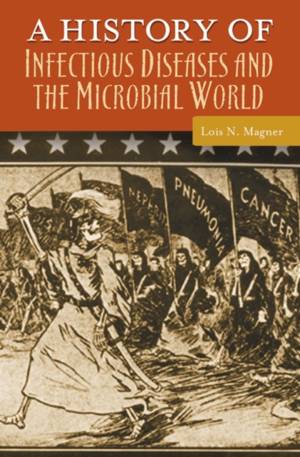
En raison d'une grêve chez bpost, votre commande pourrait être retardée. Vous avez besoin d’un livre rapidement ? Nos magasins vous accueillent à bras ouverts !
- Retrait gratuit dans votre magasin Club
- 7.000.000 titres dans notre catalogue
- Payer en toute sécurité
- Toujours un magasin près de chez vous
En raison de la grêve chez bpost, votre commande pourrait être retardée. Vous avez besoin d’un livre rapidement ? Nos magasins vous accueillent à bras ouverts !
- Retrait gratuit dans votre magasin Club
- 7.000.0000 titres dans notre catalogue
- Payer en toute sécurité
- Toujours un magasin près de chez vous
Description
A History of Infectious Diseases and the Microbial World offers readers answers to specific questions, as well as the challenge of a narrative that will stimulate their curiosity and encourage them to ask questions about the theory, practice, and assumptions of modern medicine.
This work provides a broad introductory overview of the history of major infectious diseases, including their impact on different populations, the recognition of specific causative agents, and the development of methods used to prevent, control, and treat them. By stressing the major themes in the history of disease, this book allows readers to relate modern concerns to historical materials. It places modern developments concerning infectious diseases within their historical context, illuminating the relationships between patterns of disease and social, cultural, political, and economic factors. Upon completing this volume, readers will be prepared to answer contemporary questions concerning the threat of newly-emerging infectious diseases, potentially devastating pandemics, and the threat of bioterrorism. One will gain a precise understanding of the nature of different kinds of pathogens, the unique mechanisms behind disease transmission, and the means used to control, prevent, and treat infectious disease. Although only a few of these deadly illnesses can be addressed in detail, those that are discussed include: malaria, leprosy, bubonic plague, tuberculosis, syphilis, diphtheria, cholera, yellow fever, poliomyelitis, HIV/AIDS, and influenza.Spécifications
Parties prenantes
- Auteur(s) :
- Editeur:
Contenu
- Nombre de pages :
- 252
- Langue:
- Anglais
- Collection :
Caractéristiques
- EAN:
- 9780275995041
- Date de parution :
- 01-04-09
- Format:
- Livre relié
- Format numérique:
- Genaaid
- Dimensions :
- 155 mm x 236 mm
- Poids :
- 521 g

Les avis
Nous publions uniquement les avis qui respectent les conditions requises. Consultez nos conditions pour les avis.






